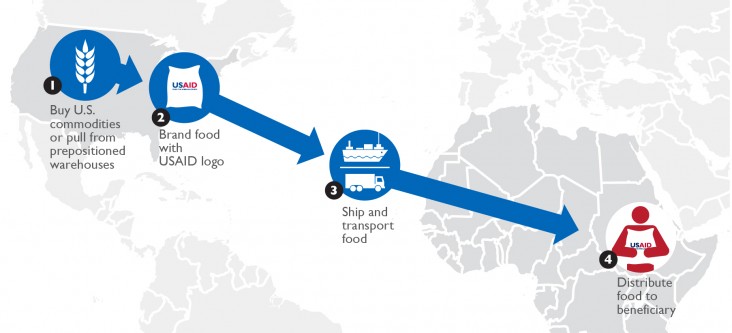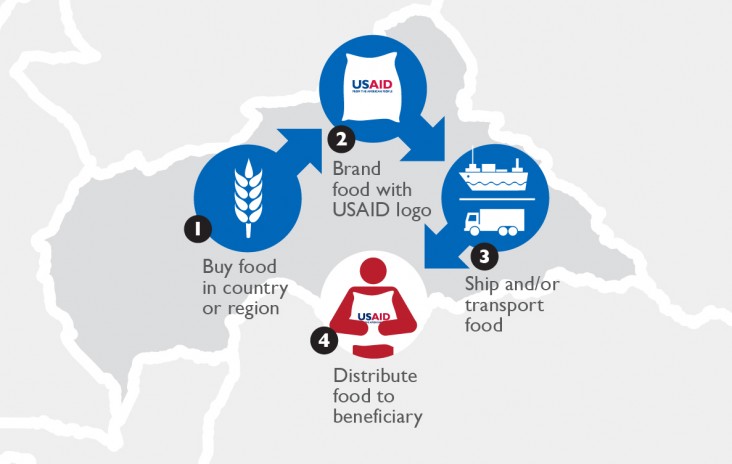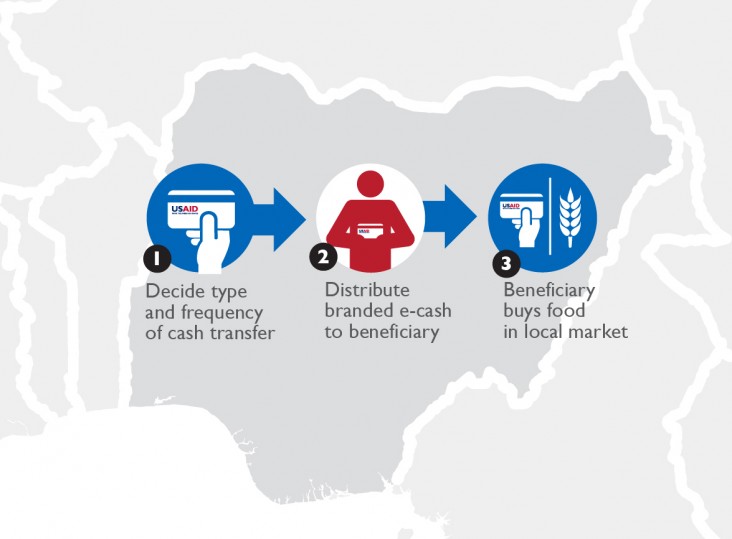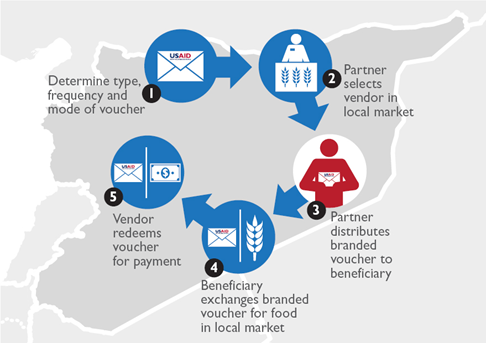- What We Do
- Agriculture and Food Security
- Democracy, Human Rights and Governance
- Economic Growth and Trade
- Education
- Ending Extreme Poverty
- Environment and Global Climate Change
- Gender Equality and Women's Empowerment
- Global Health
- Water and Sanitation
- Working in Crises and Conflict
- U.S. Global Development Lab
USAID provides emergency food assistance to vulnerable populations affected by natural disasters such as droughts and floods, and in response to conflict. Response tools include U.S.-purchased food (“in kind” food aid) or food purchased in the affected country or region. It sometimes provides beneficiaries with cash or food vouchers so they can directly access food in their local markets. There is no one “right” way to aid hungry people. Interventions depend on food insecurity causes, the functioning of markets, security conditions, and overall program goals. Cost, local diet preferences, and timeliness are also factors.
U.S. In-Kind Food Aid
U.S. in-kind food aid (Title II) is often used to respond to an emergency where: 1. local markets are not functioning; 2. there isn’t enough food in local markets to meet need; or 3. beneficiaries do not have physical access to markets. A typical food basket can include a grain, a pulse, and oil, designed to mirror local diets as much as possible. This food aid takes an average of 4–6 months to reach beneficiaries. Early warning data and speed of delivery factor into final program decisions.
For example: In Ethiopia, below-normal rainfall - triggered by El Nino - has led to the worst drought in 50 years, creating severe food insecurity. In FY 2015-2016, USAID partnered with CRS and WFP to deliver Title II in-kind food assistance to vulnerable, drought-affected populations and refugees throughout Ethiopia.

Local and Regional Purchase

Locally or regionally purchased commodities are often used when local or regional markets have adequate quantities of food available to supply emergency food assistance programs without impacting prices or commercial trade. Locally or regionally purchased food reaches beneficiaries within 1–2 months.
For example: With Title II commodities not readily available, USAID's partner WFP purchased food regionally for the Central African Republic, thus preventing gaps in the food pipeline and ensuring that the most vulnerable got the food they needed, when they needed it.
Cash Transfers for Food

Cash transfers and vouchers are often used when local markets have sufficient food and people simply can’t afford it. Cash transfers may be used when people are physically spread out or highly mobile, rapid response is high priority, or food needs are so severe people will spend most new income on food.
For example: In Nigeria, conflict related to Boko Haram increases displacement, reduces food access and disrupts livelihoods. In response, USAID provides cash transfers, among other modalities, to internally displaced persons and host communities. Cash-based assistance gives beneficiaries the ability to shop in local markets and buy food that is culturally familiar.
Food Vouchers

Vouchers may be used when working with specific vendors, ensuring people receive certain foods, or for security reasons. Vouchers can strengthen local markets by enabling participating local vendors to sell more food. Debit card or mobile phone cash transfers, as well as electronic vouchers may benefit local banks and mobile phone companies.
For example: USAID and partner WFP are currently providing food assistance to Syrian refugees through many modalities, including electronic food vouchers. Vouchers are a reliable, timely, and secure way to provide assistance to vulnerable individuals, and also allow families to tailor food assistance to their individual needs while supporting the local economy in refugee hosting areas.
Download PDF [455 kb]







Comment
Make a general inquiry or suggest an improvement.